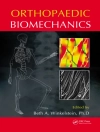The definitive one-stop reference on safely navigating highly complex facial anatomy
The primary goal of Facial Danger Zones: Staying safe with surgery, fillers and non-invasive devices is to help surgeons achieve optimal results and maximize safe outcomes for a wide array of facial cosmetic procedures. Authored by internationally renowned plastic surgeon Rod Rohrich and distinguished co-authors James Stuzin, Erez Dayan, and E. Victor Ross, this user-friendly book provides multidisciplinary insights and expert knowledge on intricate facial anatomy, navigating safe and dangerous facial zones, and the use of minimally invasive technologies.
The book is divided into three sections:
- Part one provides an overview of facial tissue anatomy and fat compartments, facial nerve danger zones, specific nerve branches, protective measures, and technical dissection considerations for safe facelift surgery.
- Part two covers fillers and neuromodulators with pearls and in-depth guidance on staying safe using six different facial danger zones.
- Part three details the safe use of energy-based devices such as ablative and non-ablative lasers, combination chemical peels, radiofrequency, and cryolipolysis.
Key highlights
- Superb facial nerve dissection safety tips for cosmetic procedures such as facelifts
- Facial danger zones and the prevention and consequences of injury graphically described through cadaver dissections, illustrations, and patient case photographs
- Visually-rich text describes how to safely and efficaciously administer lasers, chemical peels, noninvasive fat removal, and skin tightening devices
- More than 20 succinct videos posted online enhance understanding of various safe approaches
This remarkable resource is destined to be the trusted, go-to companion for trainee and veteran surgeons who specialize in
Зміст
<p><strong>Part I: Facial Nerves</strong><br>1 Overview of Facial Tissue Anatomy<br>2 Facial Fat Compartments<br>3 Overview: Facial Nerve Danger Zone<br>4 Frontal Branch of the Facial Nerve<br>5 Zygomatic and Buccal Branches<br>6 Protecting the Marginal and Cervical Branches of the Facial Nerve<br>7 Great Auricular Nerve<br>8 Technical Considerations: Extended SMAS Dissection and Lateral SMASectomy/Platysma Window<br><strong>Part II: Fillers and Neuromodulators</strong><br>9 Introduction<br>10 Facial Danger Zone 1 – Glabellar Region<br>11 Facial Danger Zone 2 – Temporal Region<br>12 Facial Danger Zone 3 – Perioral Region<br>13 Facial Danger Zone 4 – Nasolabial Region<br>14 Facial Danger Zone 5 – Nasal Region<br>15 Facial Danger Zone 6 – Infraorbital Region<br><strong>Part III: Energy-Based Devices</strong><br>16 Maximizing Safety with Ablative Lasers<br>17 Maximizing Safety with Nonablative Lasers<br>18 Trichloroacetic Acid Combined with Jessner’s Chemical Peel Safety<br>19 Maximizing Safety with Radiofrequency-Based Devices<br>20 Maximizing Safety with Cryolipolysis<br>21 Maximizing Safety with Microneedling</p>












